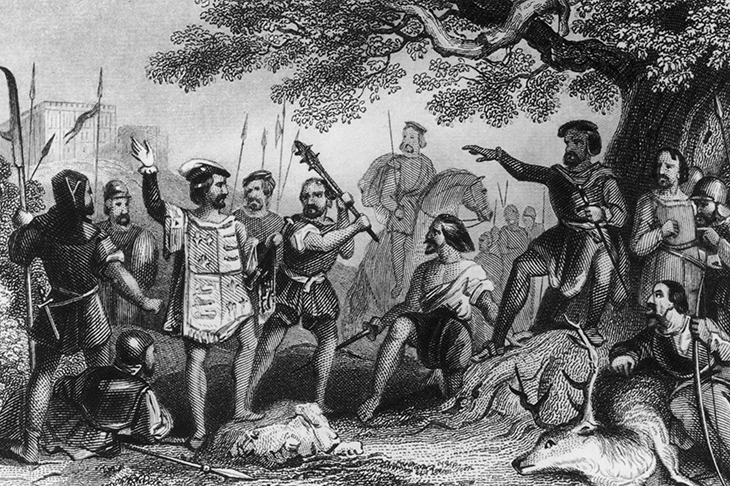Tombland is not to be treated lightly. Its length hints at its ambitions. Here is a Tudor epic disguised as a historical crime novel.
C.J. Sansom’s ‘Shardlake’ series, of which this is the seventh episode, deals with the activities of a hunchbacked lawyer in the 1530s and 1540s. The bloated old king is now dead, and his son, Edward VI, a minor, rules through the Lord Protector, his uncle Somerset. England is in a parlous state — verging on bankruptcy after a disastrous Scottish war, uneasy with the new regime’s ultra-Protestant policies and on the brink of civil unrest.
Shardlake has somehow managed to cling to his integrity, despite having some dangerously high-profile clients. Among the latter is the Lady Elizabeth, the 15-year-old daughter of Henry VIII’s disgraced queen Anne Boleyn. Elizabeth despatches Shardlake to Norwich, England’s second wealthiest city, to monitor the trial for murder of a distant cousin of her mother’s. John Boleyn has been charged with the brutal murder of his estranged wife.
Shardlake’s investigation is the central thread of the novel, but its main purpose, in terms of the plot, is to give him a reason to be in Norwich in 1549. The city was the focus of Kett’s rebellion, a large, well-organised insurrection that defeated a royal army and, for a few short weeks, controlled a large slice of Norfolk.
This is Sansom’s real subject. Shardlake is captured by the rebels. He lives among them, effectively a prisoner on parole, in their vast camp on Mousehold Heath overlooking the city. Increasingly he comes to understand their grievances — the wool trade, source of the area’s wealth, has made the rich much richer and the poor much poorer. Shardlake is also sucked into the topsy-turvy world of the camp, which he finds as dangerous as the murder mystery he continues to investigate.
Where Shardlake goes, so do we. Sansom has the trick of writing an enthralling narrative. Like Hilary Mantel, he produces densely textured historical novels that absorb their readers in another time. He has a PhD in history and it shows — in a good way. He is scrupulous about distinguishing between fact and fiction. (Typically, the last 60 pages of Tombland consist of a substantial historical note and a bibliography.) He also relishes the language of the time. It’s difficult not to warm to a book in which typical insults are ‘you dozzled spunk-stain’ or ‘you bezzled puttock’.
Is Tombland unnecessarily long? Probably, but I’m not complaining.






Comments